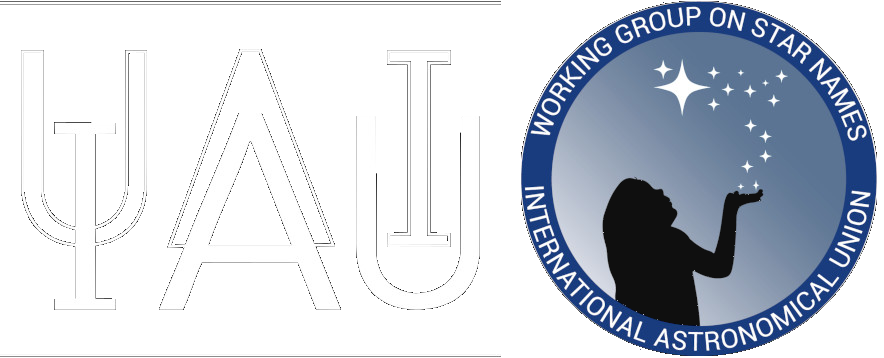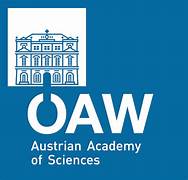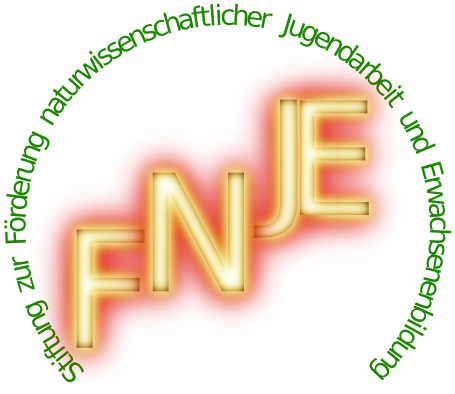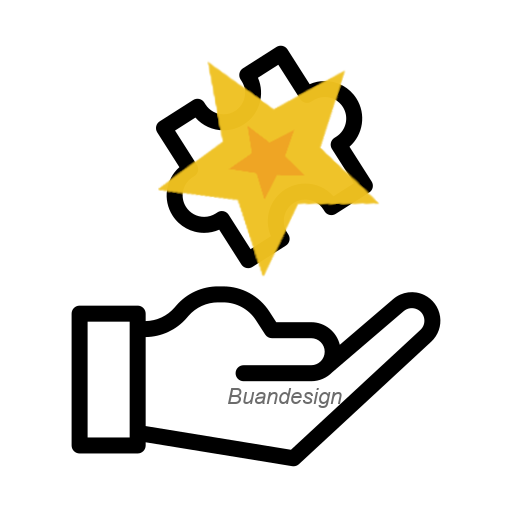Balinese (All Terms)
Following Alfred Maas ().
test: ᬓᬮᬲᬸᬗ᭄ᬲᬂ
List of terms
| No | Aksara Bali | Transliteration | English | Note | Source |
|---|---|---|---|---|---|
| 1 | ᬓᬮᬲᬸᬗ᭄ᬲᬂ | kala sungsang | "Upside down daemon" | Wereldmuseum Leiden (National Museum of Ethnology) Puri Bali Klungkung UPTD Museum Bali Seminar | |
| 1 | ᬳᬜ᭄ᬘ᭠ ᬳᬜ᭄ᬘ | antja-antja | "Upside down daemon" | old spelling | Friederick (Voorlopig Verslag von het eiland Bali |
| 1 | ᬳᬜ᭄ᬘ᭠ ᬳᬜ᭄ᬘ | anca-anca | "Upside down daemon" | Enhanced Spelling | UPTD Museum Bali Seminar |
| 1 | ᬲᬸᬗ᭄ᬲᬗ᭄ᬓᬮ | sungsang kala | "Upside down daemon" | UPTD Museum Bali Seminar | |
| 2 | ᬕᬚᬄ | gadjah | elephant | old spelling | Wereldmuseum Leiden (National Museum of Ethnology) |
| 2 | gajah | elephant | Enhanced Spelling | UPTD Museum Bali Seminar | |
| 3 | ᬧᬢᬺᬫ᭄ | patrěm | Keris / indigenous traditional dagger | Wereldmuseum Leiden (National Museum of Ethnology) Puri Bali Klungkung UPTD Museum Bali Seminar | |
| 3 | ᬓ᭄ᬭᬶᬲ᭄ | kris | short sword that possess considerable magical power and must be treated with great respect; some have wavy blades; almost always worn by male dancers slung across the back, handle to the right; an important part of Balinese traditonal dress for such events as weddings, tooth filings, and so on. | Friederick (Voorlopig Verslag von het eiland Bali | |
| 4 | ᬳᬸᬮᬸᬓᬸ | huluku | A plow | The same, because ᬳᬸ could stand for “u” or “hu” | Wereldmuseum Leiden (National Museum of Ethnology) |
| 4 | uluku | A plow | UPTD Museum Bali Seminar | ||
| 4 | ᬯᬸᬮᬸᬓᬸ | wuluku | A plow | Friederick (Voorlopig Verslag von het eiland Bali UPTD Museum Bali Seminar | |
| 4 | ᬯᬮᬸᬓᬸ | waluku | A plow | UPTD Museum Bali Seminar | |
| 4 | ᬢᭂᬗ᭄ᬕᬮ | těnggala | A plow | UPTD Museum Bali Seminar | |
| 5 | ᬓᬯᬦ᭄ᬤ | kawanda | spirit | Wereldmuseum Leiden (National Museum of Ethnology) Puri Bali Klungkung UPTD Museum Bali Seminar | |
| 5 | ᬕᭀᬯᬂ | gowang | spirit | Friederick (Voorlopig Verslag von het eiland Bali UPTD Museum Bali Seminar | |
| 5 | ᬮᬯᬾᬬᬦ᭄ | lawean/laweyan | spirit | UPTD Museum Bali Seminar | |
| 5 | ᬕᬸᬫᬯᬂ | gumawang | spirit | UPTD Museum Bali Seminar | |
| 6 | ᬓᬮᬧᬲᬸᬦ᭄ᬤᭂ | kalapa sundě | spelling variant of "Kělapa Sunda" | Wereldmuseum Leiden (National Museum of Ethnology) | |
| 6 | ᬜ᭄ᬚᬸ | n’ju | this is the only sort of coconut available in most parts of the west. used in Bali principally for making oil | Friederick (Voorlopig Verslag von het eiland Bali | |
| 6 | ᬓ᭄ᬮᬧᬤᭀᬚᭀᬂ | klapa dojong | Klapa = coconut, spelling variant of "Kělapa Sunda" | Puri Bali Klungkung | |
| 6 | ᬓᭂᬮᬧ | kělapa | spelling variant of "Kělapa Sunda" | UPTD Museum Bali Seminar | |
| 6 | ᬓᭂᬮᬧᬲᬸᬦ᭄ᬤ | kělapa sunda | spelling variant of "Kělapa Sunda" | UPTD Museum Bali Seminar | |
| 6 | ᬓᬮᬘᬶᬦ᭄ᬤᭂ | kala cindě | spelling variant of "Kělapa Sunda" | UPTD Museum Bali Seminar | |
| 6 | ᬓᭂᬮᬧᬲᭀᬦ᭄ᬤᭀ | kělapa sondo | spelling variant of "Kělapa Sunda" | UPTD Museum Bali Seminar | |
| 6 | ᬧᭀᬳᭀᬦ᭄ᬓᭂᬮᬧ | pohon kělapa | It is stated in Indonesian, meaning coconut; spelling variant of "Kělapa Sunda" | UPTD Museum Bali Seminar | |
| 7 | ᬤᬸᬧ | dupa | incense | Wereldmuseum Leiden (National Museum of Ethnology) UPTD Museum Bali Seminar | |
| 7 | ᬓᬸᬓᬸᬲ᭄ | kukus | vapor, smoke, steam ; to cook in rice steamer, usually in the shape of a cone, woven from bamboo strips, tightly woven near the top, loosely woven near the apex of the cone | UPTD Museum Bali Seminar | |
| 7 | ᬓᭂᬫᬸᬓᬸᬲ᭄ | kěmukus | name variant of Dupa | UPTD Museum Bali Seminar | |
| 8 | ᬳᬸᬮᬜ᭄ᬚᬃ | hulandjar | The same, because ᬳᬸ could stand for “u” or “hu” | Wereldmuseum Leiden (National Museum of Ethnology) | |
| ulandjar | Friederick (Voorlopig Verslag von het eiland Bali | ||||
| ᬯᬸᬮᬜ᭄ᬚᬃ | wulandjar | old spelling | Puri Bali Klungkung | ||
| wulanjar | Enhanced Spelling | UPTD Museum Bali Seminar | |||
| ᬓᬶᬭᬶᬫᬦ᭄ | kiriman | UPTD Museum Bali Seminar | |||
| ᬳᬓᬶᬭᬶᬫ᭄ | akirim | UPTD Museum Bali Seminar | |||
| 9 | ᬍᬫ᭄ᬩᬸ | lěmbu | A white cow, ox | Wereldmuseum Leiden (National Museum of Ethnology) UPTD Museum Bali Seminar | |
| 10 | ᬧᭂᬤᬢᬶᬲᬸᬳᬸᬂ | Pědati suhung | Pedati is Indonesian means horse cart | The same, because ᬳᬸ could stand for “u” or “hu” | Wereldmuseum Leiden (National Museum of Ethnology) |
| pědati suung | Suung = quiet place, empty, quiet (temporarily vs. buu permanently because abandoned) | UPTD Museum Bali Seminar | |||
| ᬧᭂᬤᬢᬶᬲᬸᬯᬸᬂ | Pědati suwung | Puri Bali Klungkung | |||
| ᬧᭂᬤᬢᬶᬧᬸᬬᬸᬂ | Pědati puyung | Puyung = empty | UPTD Museum Bali Seminar | ||
| ᬧᬤᬢᬶᬲᬸᬜ᭄ᬚ | Padati sunja | Friederick (Voorlopig Verslag von het eiland Bali | |||
| ᬧᭂᬤᬢᬶ | pědati | UPTD Museum Bali Seminar | |||
| 11 | ᬚᬭᬦ᭄ | djaran | horse | old spelling, jaran is the enhanced spelling | Wereldmuseum Leiden (National Museum of Ethnology) Puri Bali Klungkung |
| ᬓᬸᬤ | kuda | Friederick (Voorlopig Verslag von het eiland Bali UPTD Museum Bali Seminar | |||
| ᬓᬸᬦ᭄ᬤ | kunda | UPTD Museum Bali Seminar | |||
| 12 | ᬬᬸᬬᬸ | djudju | crab that lives in fresh water, that appears near the sea and beach only in the rainy season when there is abundant runoff from the land | old spelling | Friederick (Voorlopig Verslag von het eiland Bali |
| yuyu | Enhanced Spelling | Wereldmuseum Leiden (National Museum of Ethnology) UPTD Museum Bali Seminar | |||
| ᬭᬓᬢ | rakata | UPTD Museum Bali Seminar | |||
| ᬯᬸᬮᬸᬲᬸᬦ᭄ | wulusun | UPTD Museum Bali Seminar | |||
| ᬓᭂᬧᬶᬢᬶᬂ | kěpiting | Crab; crab that lives on the beach, has ten legs, two of which are sharp pincers, its back is hard, blackish green in color, as wide as the palm of the hand, edible (Scylla serrata) | UPTD Museum Bali Seminar | ||
| 13 | ᬳᬲᬸ | hasu | dog | The same, because ᬳ could stand for “a” or “ha” | Wereldmuseum Leiden (National Museum of Ethnology) |
| asu | UPTD Museum Bali Seminar | ||||
| ᬳᬲᬸᬳᬚᬓ᭄ | Asu adjak | ajak = along with; with | Friederick (Voorlopig Verslag von het eiland Bali | ||
| ᬳᬲᬸᬳᬚᬕ᭄ | Asu adjag | Puri Bali Klungkung | |||
| ᬳᬜ᭄ᬚᬶᬂ | anjing | It is an Indonesian term for dog | UPTD Museum Bali Seminar | ||
| 14 | ᬚᭀᬗ᭄ᬲᬭᬢ᭄ | Djong sarat | Jong = part of the constellation Ursa Major; its bowl is regarded as a boat Sarat = laden, full, heavy, fully loaded, over-loaded; an important need | old spelling | Wereldmuseum Leiden (National Museum of Ethnology) |
| Jong sarat | Enhanced Spelling | UPTD Museum Bali Seminar | |||
| ᬚᬸᬗ᭄ᬲᬭᬢ᭄ | Djung sarat | Jung = small animal soaked in arak and eaten Sarat = aden, full, heavy, fully loaded, over-loaded; an important need | old spelling | Puri Bali Klungkung | |
| Jung sarat | Enhanced Spelling | UPTD Museum Bali Seminar | |||
| ᬧᭂᬭᬳᬸᬲᬭᬢ᭄ | Pěrahu sarat | Perahu = boat Sarat = aden, full, heavy, fully loaded, over-loaded; an important need | UPTD Museum Bali Seminar | ||
| 15 | ᬲᬶᬤᬫᬮᬸᬂ | sidamalung | Wereldmuseum Leiden (National Museum of Ethnology) UPTD Museum Bali Seminar | ||
| ᬘᬾᬮᬾᬂ | tjeleng | Celeng = pig | old spelling, Celeng is the Enhanced Spelling | Friederick (Voorlopig Verslag von het eiland Bali | |
| 16 | ᬳᭂᬭᬂ᭠ ᬗᭂᬭᬂ | Hěrang-nghěrang | Wereldmuseum Leiden (National Museum of Ethnology) | ||
| ᬗᭂᬭᬂ᭠ ᬳᭂᬭᬂ | ngěrang-ěrang | erang = Feelings of shame mixed with anger | Friederick (Voorlopig Verslag von het eiland Bali | ||
| ᬢᬗᬶᬲ᭄ | tangis | cry | UPTD Museum Bali Seminar | ||
| 17 | ᬕᬚᬳ᭄ᬫᬶᬦ | gadjahmina | gajah = elephant mina = the god associated with fish | old spelling, gajah mina is the Enhanced Spelling | Wereldmuseum Leiden (National Museum of Ethnology) |
| ᬕᬚᬫᬶᬦ | gadjamina | old spelling, gaja mina is the Enhanced Spelling | Friederick (Voorlopig Verslag von het eiland Bali UPTD Museum Bali Seminar | ||
| ᬫᬓᬭ | makara | Puri Bali Klungkung | |||
| ᬓᬫ᭄ᬧᭁᬲ᭄ | kampaus | UPTD Museum Bali Seminar | |||
| 18 | ᬮᬸᬫ᭄ᬩᬸᬂ | lumbung | elevated rice barn, rice granary, rice storage place | Wereldmuseum Leiden (National Museum of Ethnology) UPTD Museum Bali Seminar | |
| ᬕᬸᬩᬸᬕ᭄ᬧᬾᬜ᭄ᬘᬾᬂ | Gubug penjteng | gubug = cottage; hut Penceng (javanese) = lopsided | old spelling, gubug penceng is the Enhanced Spelling | Puri Bali Klungkung | |
| ᬫᬸᬚᬸᬂ | mujung | full; mounting (about rice, food, etc. in containers) | UPTD Museum Bali Seminar | ||
| 19 | ᬓᬃᬢᬶᬓ | kartika | name of the fourth month of Bali | Wereldmuseum Leiden (National Museum of Ethnology) UPTD Museum Bali Seminar | |
| ᬓᬺᬢ᭄ᬢᬶᬓ | krěttika | Friederick (Voorlopig Verslag von het eiland Bali Puri Bali Klungkung | |||
| ᬓᬭᬯᬶᬓ | karawika | UPTD Museum Bali Seminar | |||
| 20 | ᬳᬢᬶᬢᬶᬯ | hatitiwa | Wereldmuseum Leiden (National Museum of Ethnology) | ||
| ᬢᬶᬢᬶᬯ | titiwa | Friederick (Voorlopig Verslag von het eiland Bali UPTD Museum Bali Seminar | |||
| ᬢᭂᬢᬶᬯᬄ | tětiwah | Puri Bali Klungkung | |||
| ᬳᬢᬶᬯ᭠ ᬢᬶᬯ | atiwa-tiwa | cremation ceremony | UPTD Museum Bali Seminar | ||
| ᬢᬶᬯ᭠ ᬢᬶᬯ | tiwa-tiwa | UPTD Museum Bali Seminar | |||
| 21 | ᬲᬗ᭄ᬓᬮ᭄ᬢᬶᬓᭂᬮ᭄ | Sangkal tikěl | sangkal = a frame for tools containing a blade (e.g. plane, razor, etc.) | Wereldmuseum Leiden (National Museum of Ethnology) Friederick (Voorlopig Verslag von het eiland Bali Puri Bali Klungkung | |
| ᬲᬗ᭄ᬓᬢᬶᬓᭂᬮ᭄ | Sangka tikěl | UPTD Museum Bali Seminar | |||
| 22 | ᬲᬮᬄᬳᬸᬓᬸᬃ | Salah hukur | salah = mistake ukur = measure; shaped effigy used in a cremation ceremony made of Chinese coins that are sewn onto a white cloth that has various symbols drawn on it. The cloth, plus other offerings is called kajang and is carried to the cemetery and burned along with the remains | The same, because ᬳᬸ could stand for “u” or “hu” | Wereldmuseum Leiden (National Museum of Ethnology) |
| Salah ukur | Friederick (Voorlopig Verslag von het eiland Bali UPTD Museum Bali Seminar | ||||
| 23 | ᬩᬤᬾ | bade | corpse stretcher tower; one of the Ngaben ceremonial supplies that will be moved to Setra (grave) or to the beach | Wereldmuseum Leiden (National Museum of Ethnology) UPTD Museum Bali Seminar | |
| bade’ | e’ is standing for e (using ᬤᬾ ) not which is different from ě (ᬤᭂ) | Puri Bali Klungkung | |||
| 24 | ᬓᬸᬫ᭄ᬩ | kumba | clay pot, general term (archaic) | Wereldmuseum Leiden (National Museum of Ethnology) UPTD Museum Bali Seminar | |
| ᬓᬸᬫ᭄ᬪ | kumbha | UPTD Museum Bali Seminar | |||
| ᬧᭂᬧᭂᬢᬦ᭄ | pěpětan | rice stalk; lice; flea | Puri Bali Klungkung | ||
| ᬚᬸᬦ᭄ | jun | Jar | UPTD Museum Bali Seminar | ||
| 25 | ᬦᬕ | naga | big snake (in stories and in some compound words); dragon; big snake (according to belief) guardian of the wind (there are those who move every day, there are those every year, like - day, - year) | Wereldmuseum Leiden (National Museum of Ethnology) Friederick (Voorlopig Verslag von het eiland Bali UPTD Museum Bali Seminar | |
| 26 | ᬩᭂᬜ᭄ᬚᬓ᭄ᬓᬗᬺᬫ᭄ | Běnjak kangrěm | Wereldmuseum Leiden (National Museum of Ethnology) | ||
| ᬩᬜ᭄ᬚᬓ᭄ᬳᬗᬺᬫ᭄ | Banjak angrěm | old spelling | Friederick (Voorlopig Verslag von het eiland Bali Puri Bali Klungkung | ||
| ᬩᬜᬓ᭄ᬳᬗᬺᬫ᭄ | Banyak angrěm | Enhanced Spelling | UPTD Museum Bali Seminar | ||
| ᬩᬜᬓ᭄ᬗᭂᬋᬫ᭄ | Banyak ngěrěm | UPTD Museum Bali Seminar | |||
| ᬳᬗ᭄ᬲᬫᭂᬗᭂᬭᬫ᭄ | Angsa měngěram | angsa = goose mengeram is Indonesian term for “brood” | UPTD Museum Bali Seminar | ||
| 27 | ᬩᬸᬩᬸᬩᭀᬲᭀᬃ | Bubu bosor | bubu = trap usually for fish or crabs, but may be for shrimp or lindung; Bangli area term for pig basket, which is called bangsung or keranjang tumpung, or keranjang celeng in other areas. Bubu is the usual word for fish or crab trap | Wereldmuseum Leiden (National Museum of Ethnology) UPTD Museum Bali Seminar | |
| ᬯᬸᬯᬸᬩᭀᬮᭀᬂ | Wuwu bolong | bolong = hole | Puri Bali Klungkung | ||
| ᬩᬸᬩᬸᬩᭀᬮᭀᬂ | Bubu bolong | UPTD Museum Bali Seminar | |||
| 28 | ᬩᬦᬯᬚ᭄ᬧᬲᬄ | Banawah pasaj | pasah = separate | Wereldmuseum Leiden (National Museum of Ethnology) | |
| ᬧ᭄ᬭᬯᬸᬧ᭄ᬕᬢ᭄ | Prawu p’gat | Friederick (Voorlopig Verslag von het eiland Bali | |||
| ᬧ᭄ᬭᭁᬧᭂᬕᬢ᭄ | Prau pěgat | prau = boat pegat = rope or string broken because of overload; cut off, separate, break off | Puri Bali Klungkung | ||
| ᬧᭂᬭᬳᬸᬧᭂᬕᬢ᭄ | Pěrahu pěgat | UPTD Museum Bali Seminar | |||
| ᬧᭂᬭᬳᬸᬧᭂᬘᬄ | Pěrahu pěcah | pecah = broken into pieces | UPTD Museum Bali Seminar | ||
| ᬳᭀᬚᭀᬲᬭᬢ᭄ | Ojo sarat | sarat = laden, full, heavy, fully loaded, over-loaded; an important need | UPTD Museum Bali Seminar | ||
| 29 | ᬋᬩᬸᬢ᭄ᬳᬸᬢᬂ | Rěbut hutang | rebut = grab; beat utang = debt of money | Wereldmuseum Leiden (National Museum of Ethnology) UPTD Museum Bali Seminar | |
| ᬫᭂᬗ᭄ᬭᬩᬸᬢ᭄ᬳᬸᬦ᭄ᬢᬂ | Měngrabut untang | Friederick (Voorlopig Verslag von het eiland Bali | |||
| ᬋᬩᬸᬢ᭄ᬳᬸᬢᬂ | rěbut-utang | rebut = grab; beat utang = debt of money | Puri Bali Klungkung | ||
| ᬫᬕᭂᬮᬸᬢ᭄ | magělut | clinch (boxing); wrestle | UPTD Museum Bali Seminar | ||
| ᬕᭂᬮᬸᬢ᭄ᬳᬸᬢᬂ | Gělut hutang | gelut = to hold or grasp closely utang = debt of money | UPTD Museum Bali Seminar | ||
| 30 | ᬳᬸᬤᬂ | Hudang | sometimes the word udang used alone is used to mean lobster; shrimp, any type of shrimp, prawn, crayfish, lobster; udang besar is a very general word commonly used by the Balinese to refer to lobster, but these are actually large crayfish and not related to the North American lobster | Wereldmuseum Leiden (National Museum of Ethnology) | |
| udang | Friederick (Voorlopig Verslag von het eiland Bali UPTD Museum Bali Seminar | ||||
| ᬳᬸᬭᬂ | urang | Shrimp | UPTD Museum Bali Seminar | ||
| ᬫᬓᬭ | makara | UPTD Museum Bali Seminar | |||
| 31 | ᬤ᭄ᬧᬢ᭄ | Dpat | Wereldmuseum Leiden (National Museum of Ethnology) | ||
| d’pat | Friederick (Voorlopig Verslag von het eiland Bali | ||||
| ᬤᭂᬧᬢ᭄ | děpat | Puri Bali Klungkung UPTD Museum Bali Seminar | |||
| ᬓᬸᬫᬗ᭄ᬫᬂ | kumangmang | UPTD Museum Bali Seminar | |||
| ᬩᭂᬕᭀᬳᭀᬂ | běgoong | UPTD Museum Bali Seminar | |||
| ᬩᭂᬕᭀᬂ | běgong | UPTD Museum Bali Seminar | |||
| 32 | ᬳ᭄ᬭᬸ | Hru | Wereldmuseum Leiden (National Museum of Ethnology) | ||
| ᬭᬸ | ru | constellation of Centaur in the southern sky, the two brightest stars of which, Alpha Centauri and Rigel Kent, are considered to be an arrow that is being shot by Arjuna toward the horse, Undakan, part of which is the Southern Cross (en) | Friederick (Voorlopig Verslag von het eiland Bali UPTD Museum Bali Seminar | ||
| ᬧᬦᬄ | panah | including arrows, bow and arrow; arrow | UPTD Museum Bali Seminar | ||
| ᬚᬸᬭᬶᬢ᭄ᬫᬢᬶ | Jurit mati | jurit = war mati = dead; die | UPTD Museum Bali Seminar | ||
| ᬓᬧᭂᬭᬂ | kapěrang | UPTD Museum Bali Seminar | |||
| ᬧᬦᬄᬭ᭄ᬳᬸ | Panah rhu | arrow | UPTD Museum Bali Seminar | ||
| ᬲᬚᬓ | sajaka | UPTD Museum Bali Seminar | |||
| 33 | ᬲᬗᬾᬗᬾ | Sangenge | Wereldmuseum Leiden (National Museum of Ethnology) | ||
| ᬲᭂᬗᬾᬗᬾ | sěngenge | Friederick (Voorlopig Verslag von het eiland Bali | |||
| ᬲᬺᬗᬾᬗᬾ | srěngenge | jav | Friederick (Voorlopig Verslag von het eiland Bali UPTD Museum Bali Seminar | ||
| ᬲᬸᬗᬾᬗᬾ | sungenge | UPTD Museum Bali Seminar | |||
| ᬗᬭᬗ᭄ᬲᬺᬗᬾᬗᬾ | Ngarang srěngenge | ngarang = compose (music, poetry, stories); flowers | UPTD Museum Bali Seminar | ||
| ᬫᬢᬳᬭᬶ | matahari | Indonesian term for Sun, known as “matanai” | UPTD Museum Bali Seminar | ||
| 34 | ᬧᬸᬳᬸᬄᬳᬢᬭᬸ | Puhuh hataru | puhuh = quail | Wereldmuseum Leiden (National Museum of Ethnology) | |
| ᬧᬸᬳᬸᬳ᭄ᬢᬭᬸᬂ | Puhuh tarung | tarung is indonesian term for fighting / batling | Friederick (Voorlopig Verslag von het eiland Bali | ||
| ᬧᬸᬚᬸᬳ᭄ᬢᬭᬸᬂ | Pujuh tarung | Puri Bali Klungkung | |||
| ᬧᬸᬯᬸᬄᬳᬢᬭᬸᬂ | Puwuh atarung | UPTD Museum Bali Seminar | |||
| ᬧᬯᬸᬄᬳᬢᬭᬸᬂ | Pawuh atarung | UPTD Museum Bali Seminar | |||
| 35 | ᬓᬶᬭᬶᬫ᭄ | kirim | Wereldmuseum Leiden (National Museum of Ethnology) | ||
| ᬚᬫ᭄ᬧᬦ | djampana | jampana = stretcher, a kind of ancient transportation tool | Old spelling, jampana is the enhanced spelling | Friederick (Voorlopig Verslag von het eiland Bali | |
| ᬕᭀᬢᭀᬗ᭄ᬫᬚᬶᬢ᭄ | Gotong majit | gotong mayit in Indonesia means to bring a corpse. | Old spelling, the enhanced spelling is gotong mayit (ᬕᭀᬢᭀᬗ᭄ᬫᬬᬶᬢ᭄) | Puri Bali Klungkung | |
| ᬮᬭᬸᬂᬧᬕ᭄ᬮᬗᬦ᭄ | Larung paglangan | larung = Drift; Throw Away | UPTD Museum Bali Seminar | ||
| ᬧᬕᭂᬮᬗᬦ᭄ | Pagělangan | wrist | UPTD Museum Bali Seminar | ||
| ᬮᬳ᭄ᬭᬸᬧᬕᬮᬗᬦ᭄ | Lahru Pagalangan | lahru = dry season | UPTD Museum Bali Seminar | ||
| ᬢᭂᬫ᭄ᬩᬕ | těmbaga | UPTD Museum Bali Seminar | |||
| ᬭᬭᬸᬂᬧᬕᭂᬮᬗᬦ᭄ | Rarung pagělangan | rarung = throw it all away; pupil of the Rangda, dressed entirely in red, hence called San Barak by local people in order to avoid having to say the real name, which is impolite or dangerous; has a long dialogue with Rangda near the end of the performance in which she is scolded for not doing Rangda's bidding; character in the Jimbaran Barong performance pagělangan = wrist | UPTD Museum Bali Seminar |





